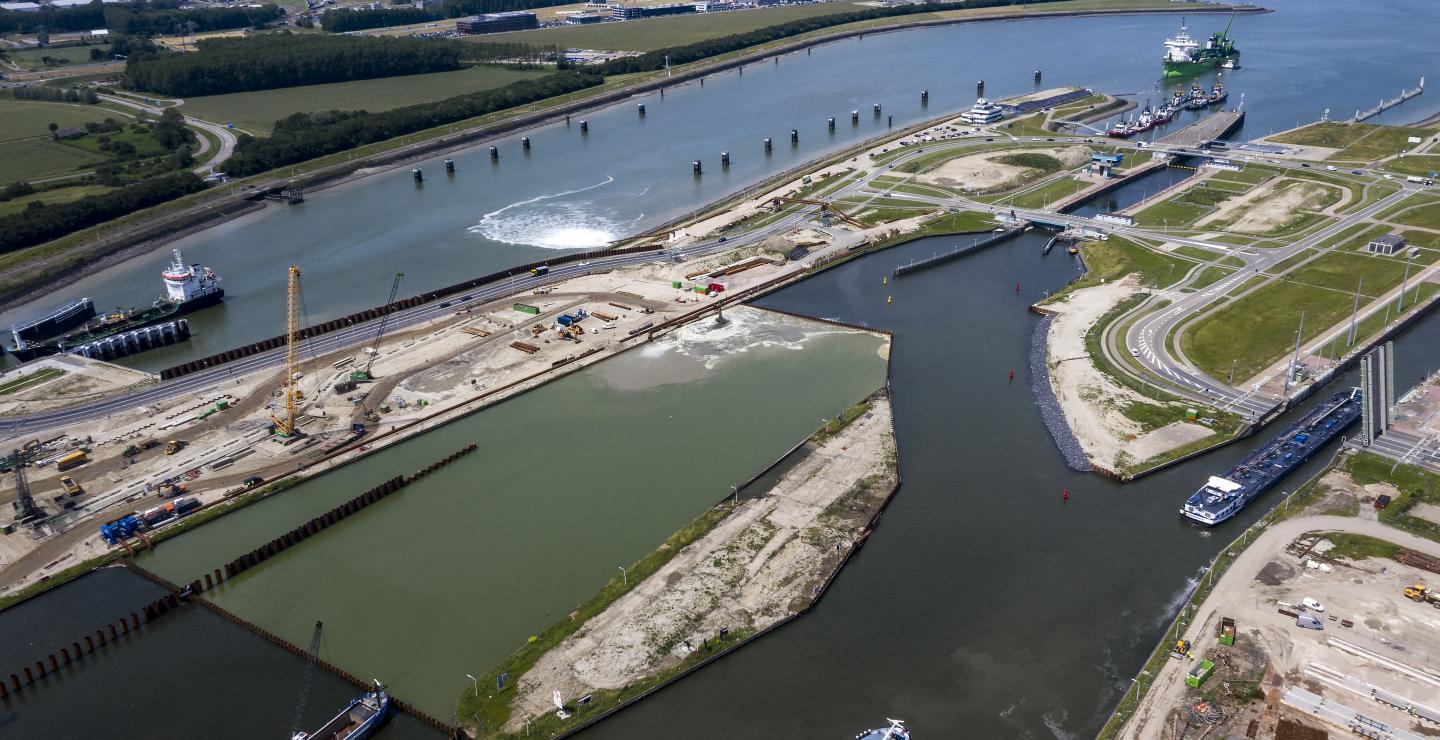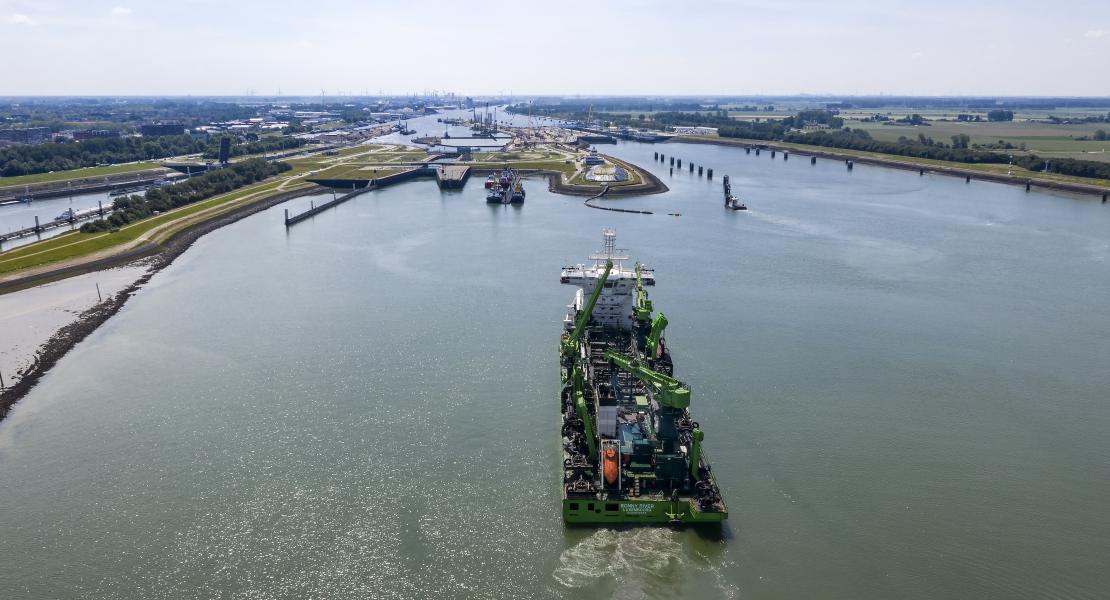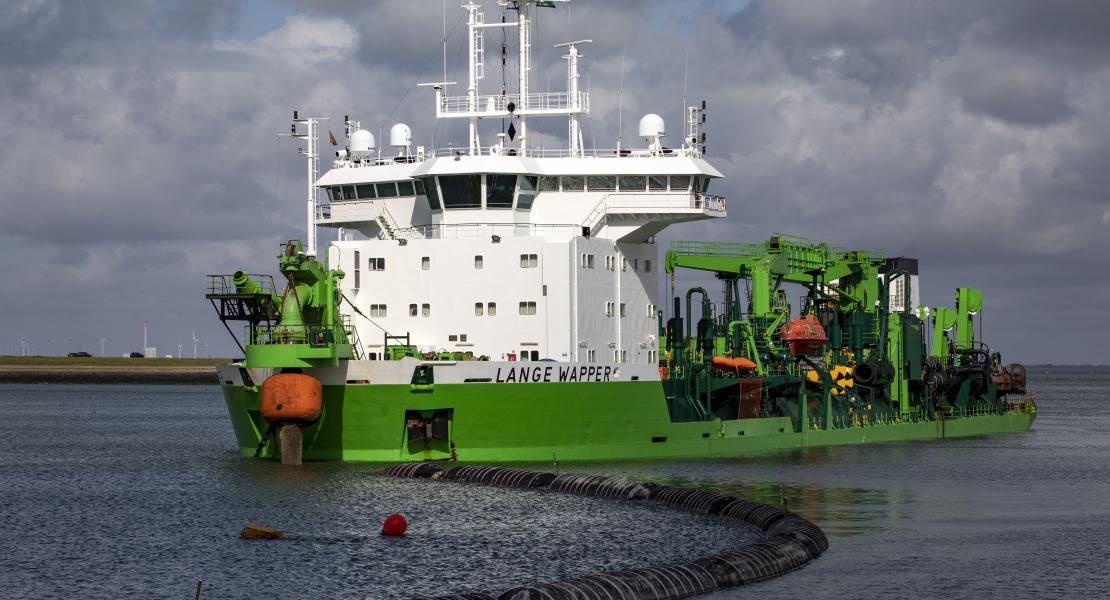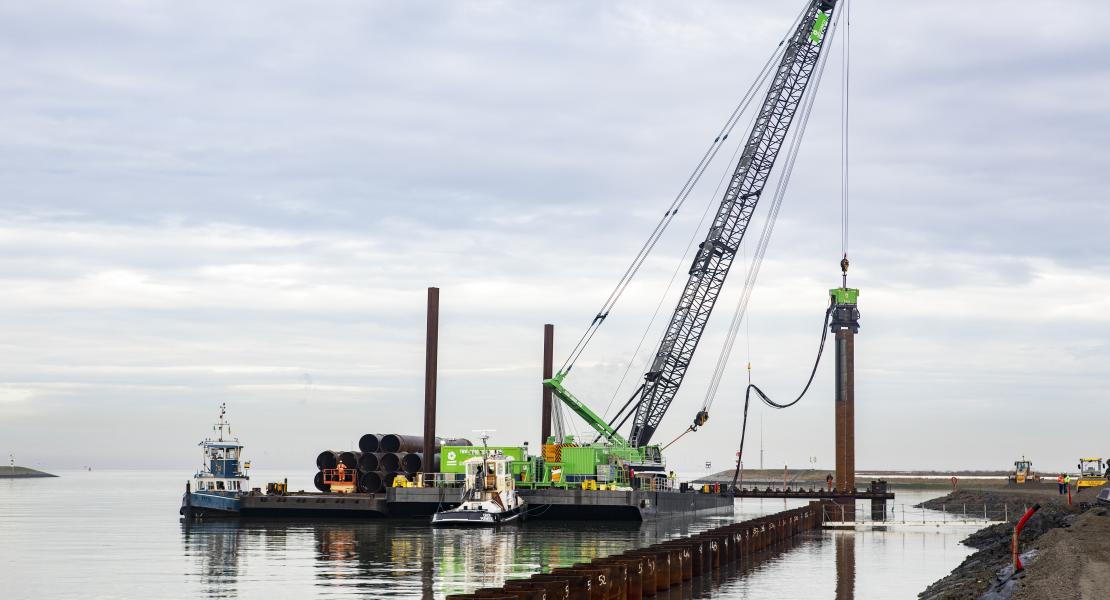The design and construct contract, as well as a two-year maintenance contract for this enormous project, was awarded to the Dutch-Belgian consortium Sassevaart. As a member of Sassevaart, DEME is responsible for the wet and dry earthmoving works and dredging, the bank and bottom protection works and the Schependijk remediation. A staggering 10 million m³ of material has to be dredged and we started works in late 2018.
Earthworks and dredging
In the earthworks and dredging scope, a total of about 10 million m³ of soil will be removed for the construction of the New Lock. Our activities include among other things:
- Deepening the Terneuzen Westvoorhaven to -16.44 m NAP.
- Alteration of the western harbour entrance of the Westvoorhaven.
- Removal of the existing spits of land around the Middle Lock, which will be replaced.
We will use the removed soil within the project as much as possible, or it will be disposed of in an approved disposal site. We will also use some of the dredged soil as foreshore sand suppletion at Knokke (Belgium).
Bank and bottom protection
Bank and bottom protection will be applied around newly constructed quays, mooring arrangements and the New Lock itself. This bank and bottom protection consists primarily of ripraps, representing approximately 400,000 tonnes.
Remediation
Various contaminated sites have been established on the Schependijk. We have the responsibility to remediate this contaminated soil before the northern part of Schependijk was delivered prepared for construction and the southern part is excavated.
The extensive scope includes:
- Design & construction of a new sea lock of 427 m x 55 m and water depth of NAP-16.44 m.
- Installation of sea lock operating system, including preparatory works for future remote operation.
- Demolition works of the existing ‘Middle lock’, and existing surrounding buildings.
- Construction of the new operations building.
- Construction of a new service port and service building.
- Installation of guiding, standby and service facilities for the lock operation.
- Adaptation of existing road network and site layout, including execution of two bascule bridges.
- Dry excavation works and soil remediation works.
- Demolition and reinstallation of scour & shore protection.
- Adaptation to the primary and regional flood defence systems.
- Deepening of inner harbour (from –11 to –14 m) and outer harbour (from –12 to –16.44 m).
- Backfill of lock platforms at levels NAP +7.5 m and NAP +9.5 m.
- Dredging works.
- Lock maintenance for 2 years post completion.





